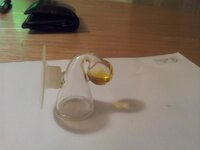FerdinandPorsche
Member
- Joined
- 13 Jan 2014
- Messages
- 83
There are a couple of reasons. The normal reason is poor distribution of the flow, which depends a lot on how the filter output is arranged. Another classic reason is that the timing of the gas in relation to the timing of the lights. Finally, the dissolution dissolution method might be weak. The placement of the diffuser is always an issue. Try porting the gas into the filter inlet and measuring the pH drop over the period of time from gas on to lights off at 30 minute or 1 hour intervals and this will tell you a lot about how the gas is behaving.
It would be more useful to sharply reduce the intensity of the light. Intensity is much more important than photoperiod length.
Cheers,
Do you mean that, from the time my co2 is released into the tank till the end of light period, check for every 30 minutes / an hour, the pH value of the tank water. I have a drop checker inside the tank, and so far, it takes 3+ hours for the drop checker to turn into complete yellow. Both lights and co2 are turned on nearly the same time (difference of 15minutes max) Does it mean I should turn on my co2 system 3 hours earlier?
For the co2, I am also facing an issue with my inline diffuser, probably getting it replaced should promise better diffused bubbles into the water flow.
I do understand that intensity is more crucial compared to the period. I ask this because I do not have another lighting for this. Although I won't be able to do this, will raising the light help to reduce to intensity (I believe so?)




